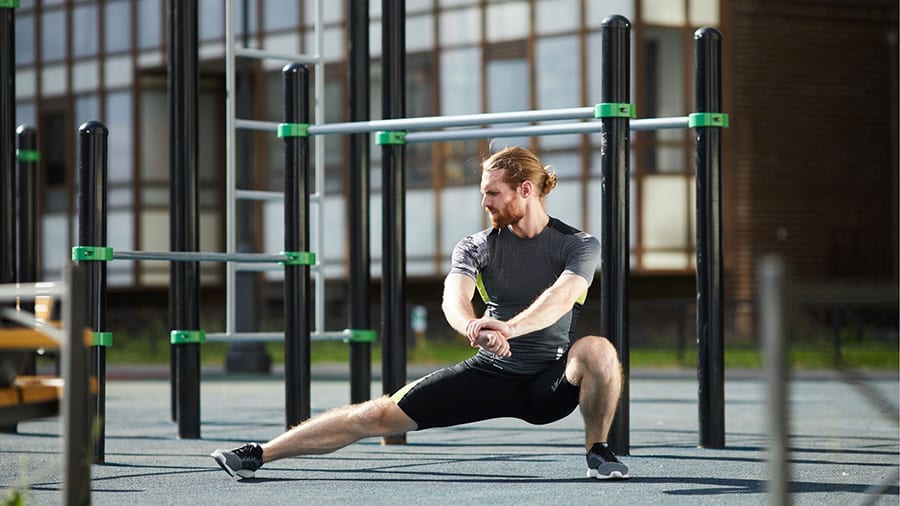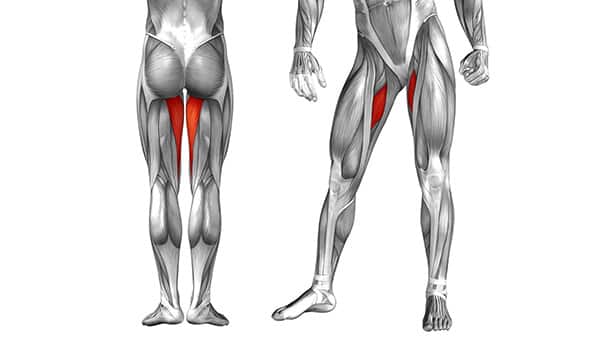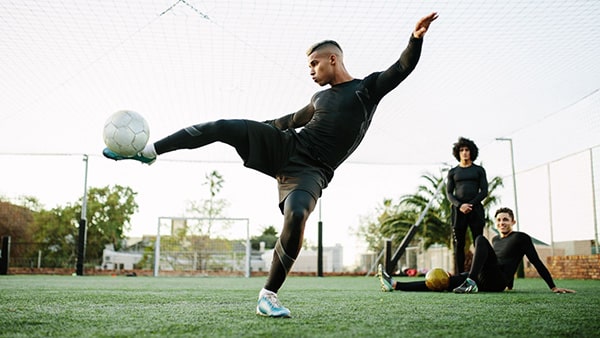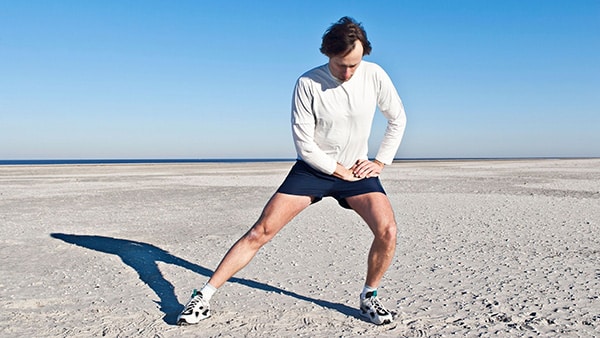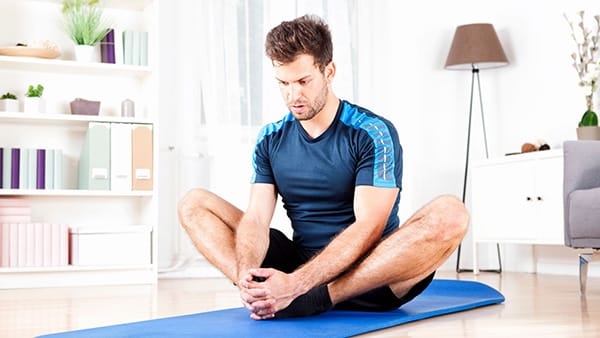The adductor is a muscle located inside the thigh. Particularly solicited in soccer players, it is also used in strength training on exercises such as the squat or thigh press. Adductors that are too stiff can cause pain and injury. As well as the psoasThey must be stretched regularly. Here are 4 exercises ofstretching of the adductor to stay healthy.
Where are the adductors located?
In terms of anatomy, the hip adductors are muscles located on the inner side of the thigh.
This set is actually composed of 5 small muscles :
- the pectine,
- the small adductor,
- the middle adductor,
- the adductor magnus,
- domestic law.
The adductor muscles are used when you perform adduction movements. As opposed to abduction, adduction refers to a movement that brings your legs together. In other words, the adductors contract as you squeeze your legs together.
That's why these muscles are stimulated when you do step and walk or move laterally. This muscle group also intervenes to ensure the internal and external rotations of the thighs.
Why should I stretch my adductors?
The importance of the adductors in sportsmen
Given their role, the adductors are essential for the sport practice of many athletes. This is the case, for example, of the players of soccerhandball, rugby, tennis or any other sport. runningand weight training.
Soccer players in particular put the adductors to a severe test. During a kick, the adductor of the leg in contact with the ball undergoes a violent extension, while that of the supporting leg contracts strongly. The same is true for goal scorers in rugby.
More broadly, the adductors promote quick starts and direction changes brutal. In weight training, fitness and crossfit, they are used in many lower body exercises, such as squats, lunges and presses.
The slightest pain or injury to the adductors can become a real handicap. No matter what your physical activityThis can prevent you from training and slow down your progress.
To prevent the risk of injury, it is essential to work the flexibility of your adductors. In the long run, too much stiffness will greatly increase the likelihood of injury.
Many athletes have now taken the reflex to stretch a few hours after their workouts or on their rest days. But the adductors are often the ones left out of these training sessions. stretching.
To gain flexibility and optimize your overall well-being, these muscles should be treated along with your quadriceps, hamstrings, glutes and calves. Think of them as soften during each stretching session.
The different types of adductor injuries
Because stiffness can lead to injury, it is essential to stretch the adductor muscles. Of course, it is equally important to do some muscle strengthening to strengthen the muscle fibers.
Well known to all sportsmen, aches and pains are the first level of muscle pain. They usually appear after a major effort. Some light stretching of the adductors, good hydration and a good night's sleep should allow you to recover in a few days.
More seriously, the muscle injuries occur when some or all of the fibers are damaged:
- elongation,
- the tear (or claquage),
- the complete break.
Depending on the severity of the injury, you may be placed on enforced rest for several weeks or months.
Finally, adductor pubalgia is another type of injury. This inflammation is very common among athletes. It manifests itself by more or less important pains at the level of the abdomen or the pubis and can be a real brake to the practice. Treating pubalgia to the adductors usually requires several weeks of rest, as well as sessions with a physiotherapist.
Regular stretching of the adductor is the best way to prevent these injuries.
The best stretching exercises for the adductors
But then, how to stretch your adductors ? Let's look at 4 easy stretching exercises that can be done at home or in the weight room.
For each of these movements, make sure to go gradually. Stretch for about 30 seconds, then release the position. Take a deep breath to bring oxygen to your muscles.
If you have a sore adductor muscle, do not stretch. It may be a sign of muscle damage. It is best to consult a doctor or physical therapist to avoid making the situation worse. If the pain is just aches and pains, opt for a light adductor stretch.
Stretching the adductor muscle in a standing position
This first adductor stretching exercise is one of the most popular.
Stand with your legs shoulder-width apart. Then move your left leg to the side by bending the knee. The right leg should remain straight.
The stretching position consists of moving your torso forward towards the bent leg to place your body weight on it. You should feel a stretch in your right adductor. Then do the other side.
You can also perform this exercise with one knee on the floor.
Stretching in a seated position
For this movement, you must be sitting on the ground in the starting position. Your legs are stretched forward.
Move each of your legs to the side, keeping your body straight. straight back. With each breath, the goal of this exercise is to move your torso forward, between your legs. As soon as you feel the stretch in your adductors, simply maintain position and continue to breathe slowly.
The butterfly stretch
The butterfly is excellent for a good stretch of the adductor.
Still sitting on the floor, join your soles together by pushing your knees outward. Your heels should be as close as possible to your pelvis. Again, make sure your back stays straight. You can stand against a wall if needed.
Place your hands on your ankles or feet. Then, lean your upper body forward, trying to get your knees to touch the floor so you can feel your muscles stretch. There is no need to strain. Simply hold the position for a few seconds before releasing.
The frog's stretch
The frog exercise is another static stretching for the adductors.
Stand on all fours, supporting yourself on your knees and elbows. The goal is to spread your knees to the sides and pull your buttocks back.
Stay in this position for about 30 seconds to stretch your adductor muscles.
Conclusion
You got it, stretch of the adductors helps to make the muscle more flexible and prevent injuries. Incorporate these exercises into your stretching sessions to increase your performance and stay healthy for a long time.

